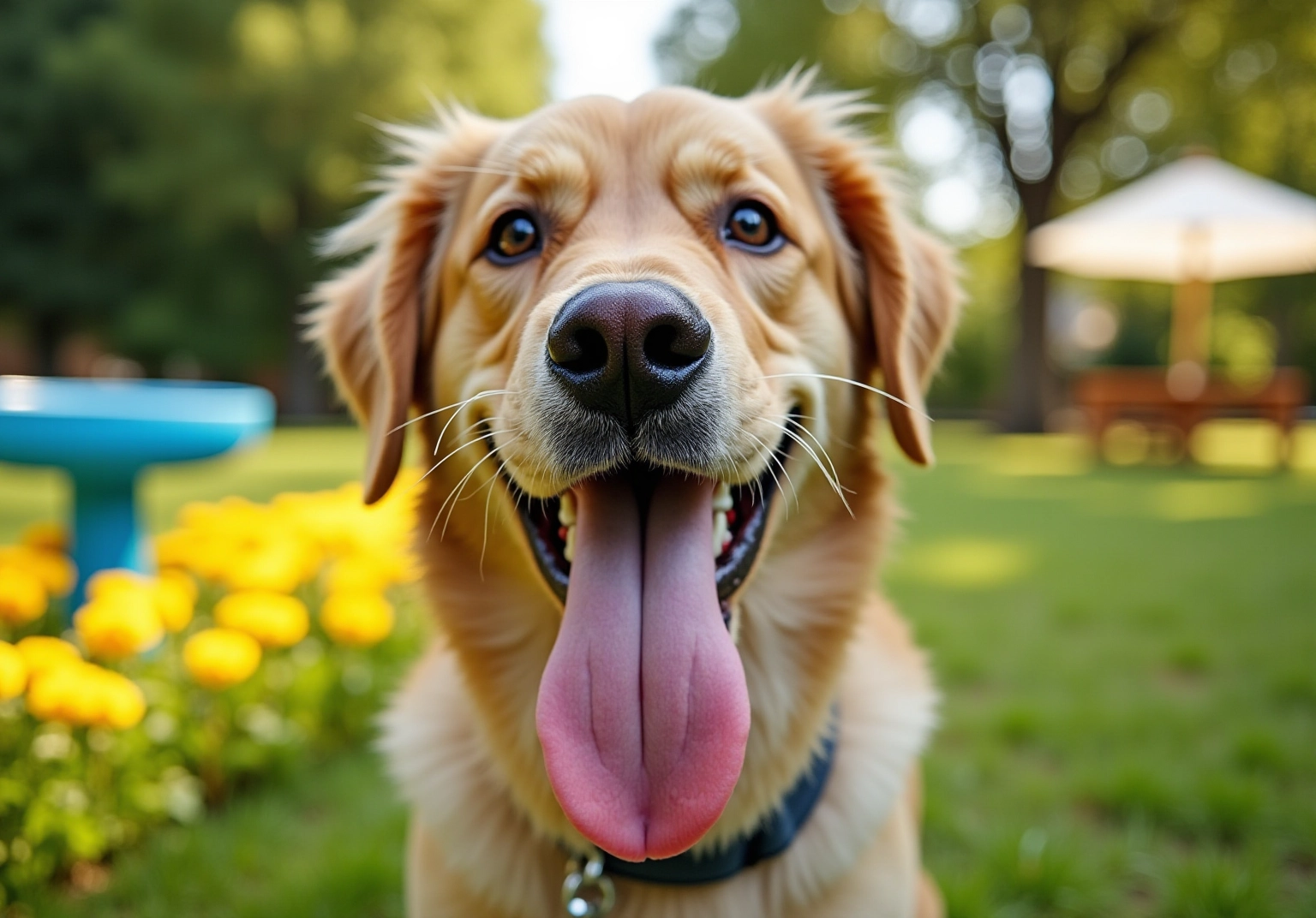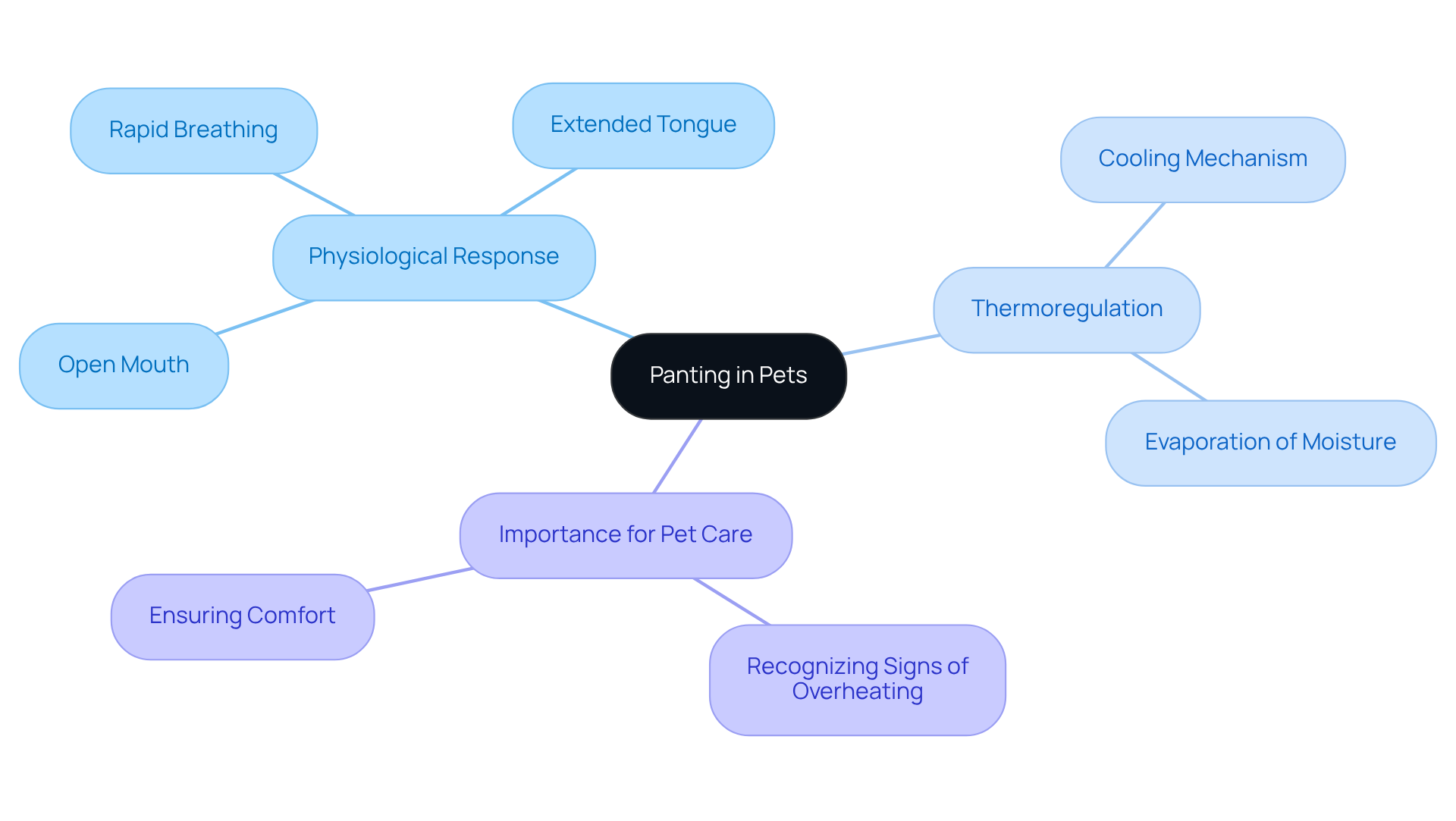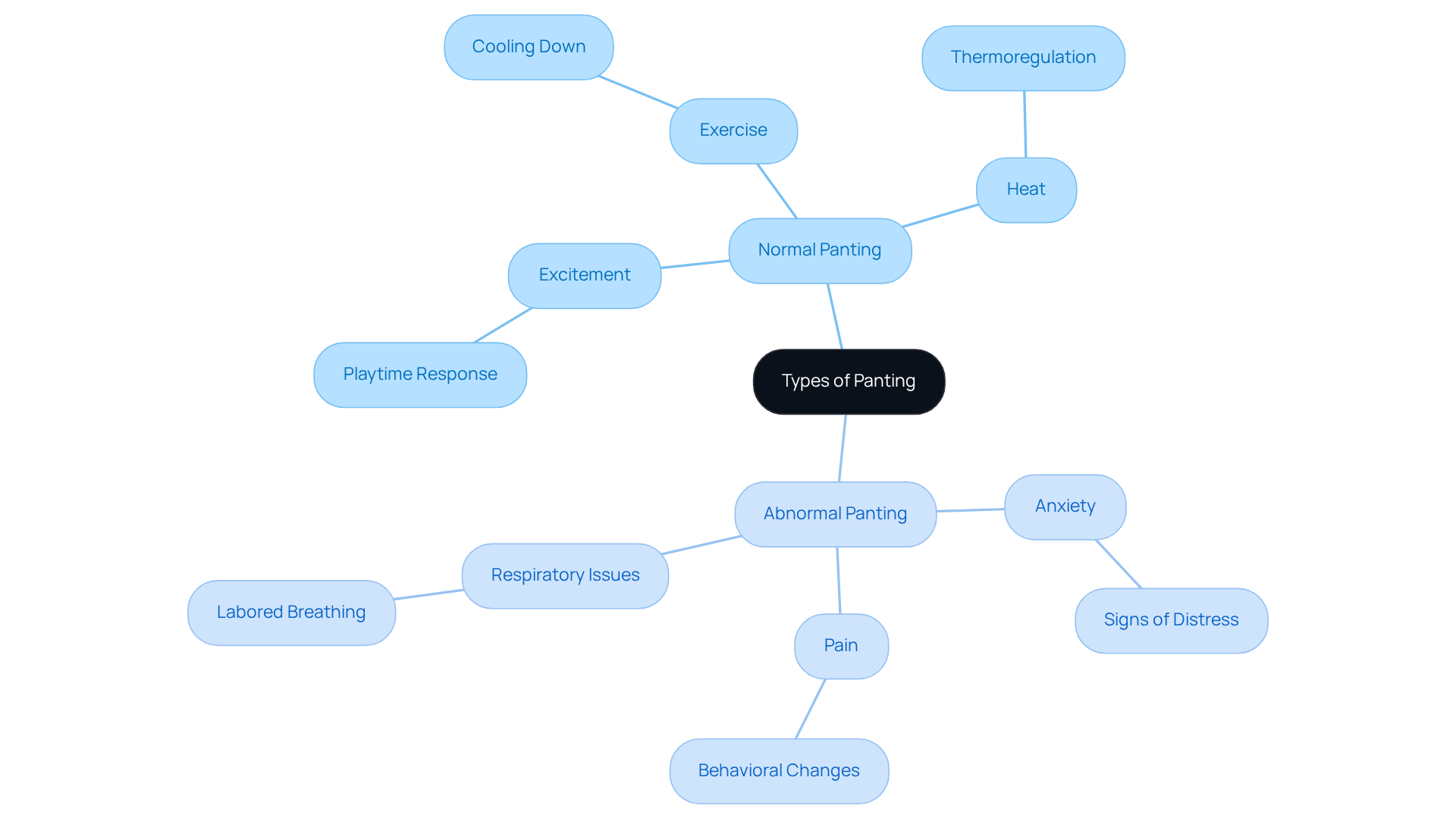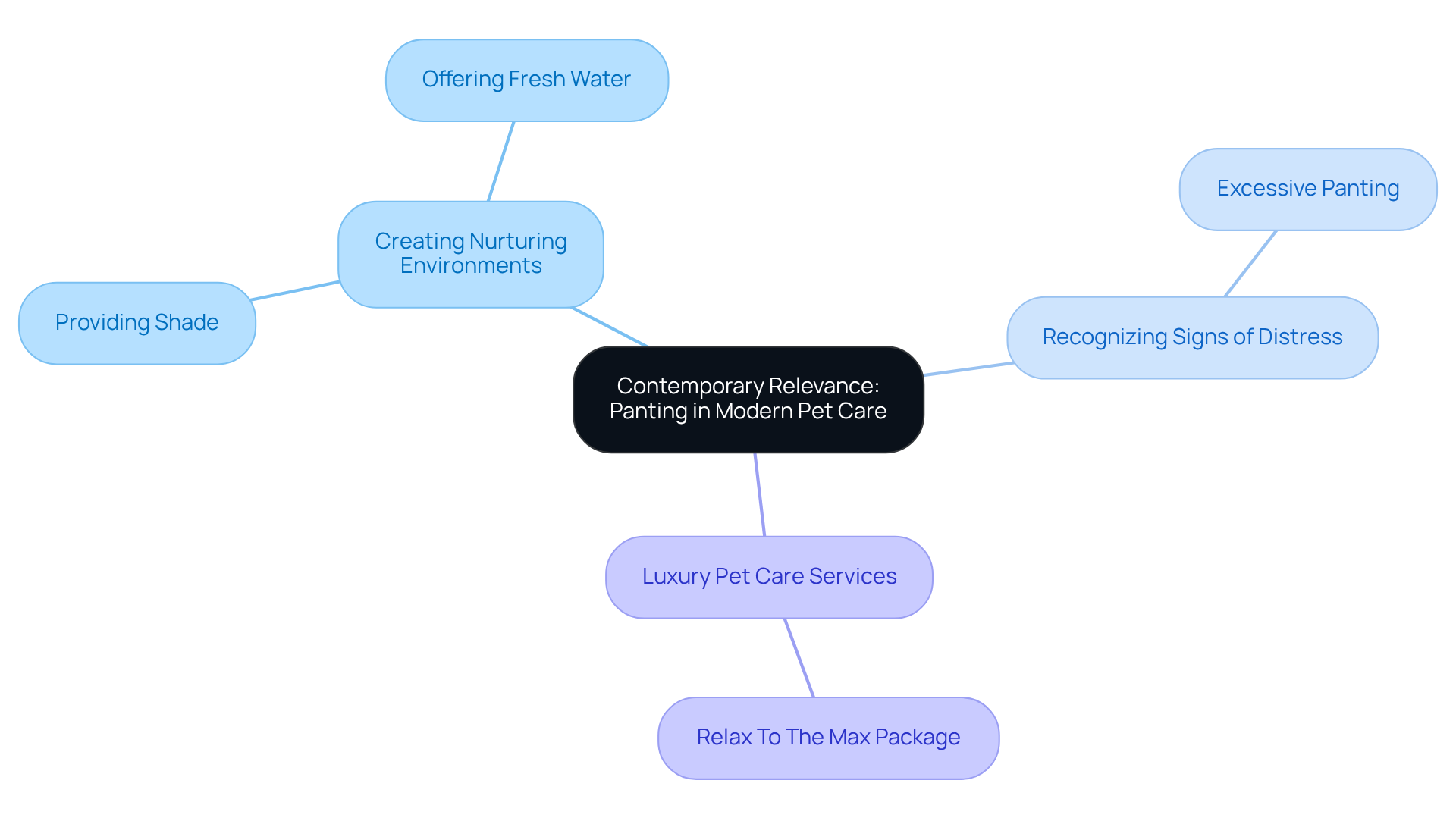
Understanding Panting: Definition, Causes, and Importance for Pets
Overview
Panting is a natural physiological response in our beloved pets, serving primarily as a way to help them cool down when they become overheated. It’s essential for pet owners to understand this instinctual behavior, as it not only reflects their pets’ needs but also plays a crucial role in identifying potential health concerns.
When panting becomes excessive or abnormal, it can be a sign that something may be wrong, and recognizing this can be vital for their well-being. By being aware of these signs, you can ensure your furry friends receive the care they deserve.
Introduction
Panting is a behavior often observed in our beloved pets, acting as a crucial mechanism for thermoregulation and offering insights into their overall health. As caring pet owners, understanding the nuances of this instinctive response can significantly enhance the love and care we provide to our furry companions.
However, what should we consider when panting seems to go beyond the norm? This article explores the definition, causes, and vital significance of panting in pets, shedding light on the delicate balance between a natural response and a potential health concern that every devoted pet owner should be aware of.
Defining Panting: An Overview of Its Essence
Panting is a natural physiological response commonly observed in our beloved dogs and cats, characterized by rapid, shallow breathing, often accompanied by an open mouth and extended tongue. This behavior primarily serves as a means for thermoregulation, helping our furry friends cool down when they become overheated. Unlike humans, who sweat to manage body temperature, our pets rely on this quick breathing to facilitate the evaporation of moisture from their respiratory systems, effectively cooling their bodies from the inside out.
Understanding this instinctive behavior is crucial for pet owners who care deeply about their companions’ well-being. It’s especially important in warmer climates or during those lively activities that bring joy to our pets. By recognizing the signs of overheating and understanding the role of panting, we can ensure our pets remain comfortable and happy. Remember, your awareness and care can make all the difference in their lives, providing them with the loving environment they deserve.

Historical Context: The Evolution of Panting Through the Ages
Panting serves as a vital survival mechanism for many species, especially for our beloved canines and felines. As we consider the ancestors of our pets, it’s heartening to know that they relied on rapid breathing to regulate their body heat while hunting or foraging in warm environments. This adaptation was crucial for maintaining their stamina and preventing overheating, which could have dire consequences. As our domesticated companions have evolved alongside us, this instinctual behavior remains essential, reflecting their rich evolutionary heritage and the ongoing need for effective thermoregulation in various climates.
Understanding this instinct can evoke a sense of compassion for our pets, particularly when we observe them panting after a playful romp or a warm day outdoors. It’s a reminder of their natural responses and the importance of providing them with a comfortable environment. By recognizing their needs, we can ensure they remain happy and healthy, avoiding the risks associated with overheating. At our resort, we are dedicated to offering personalized care that respects these instincts, ensuring that your furry friends are comfortable and well looked after.
As pet owners, it’s only natural to worry about our pets’ well-being. We want to provide them with the best care possible, and understanding their behaviors is a significant part of that journey. Our commitment to nurturing your pets means that we offer tailored solutions to help them thrive, whether it’s through proper hydration, shaded areas for rest, or simply being attentive to their needs. Together, we can create a loving environment where your pets can feel safe and cherished.
Techniques and Styles: Exploring the Art of Panting
Panting can be categorized into several types based on its triggers, making it essential to understand what your beloved pet might be experiencing. Normal rapid breathing often occurs during exercise, excitement, or in response to heat. For instance, after a vigorous play session, a dog may be panting to cool down and return to a resting state. As a caring pet owner, it’s natural to feel concerned about your furry friend’s well-being during these moments.
However, it’s important to be aware that excessive or abnormal breathing, including panting, can signal underlying health issues, such as anxiety, pain, or respiratory problems. This can understandably cause worry for you as a pet owner. Keeping a watchful eye on your companion’s behavior is crucial. If you notice heavy breathing that seems excessive or is accompanied by other troubling signs, seeking advice from a veterinarian is a compassionate step you can take. Remember, you are not alone in this journey; many pet owners share similar concerns, and there are resources available to help you ensure your pet’s health and happiness.

Contemporary Relevance: The Role of Panting in Modern Pet Care
In contemporary animal care, understanding heavy breathing is crucial for ensuring the well-being and comfort of our beloved pets, especially in urban settings where heat and stress can be particularly pronounced.
As pet owners, we are encouraged to create nurturing environments that help minimize overheating, such as:
- Providing ample shade
- Offering fresh water during outdoor activities
Recognizing the signs of unusual breathing, including panting, can lead to timely interventions for potential health issues, ultimately enhancing the overall welfare of our furry companions.
At luxury pet care facilities like Jet Pet Resort, we prioritize monitoring pets for signs of distress, such as excessive panting, to ensure a safe and enjoyable experience for all our guests.
Our ‘Relax To The Max’ package offers a luxurious bedtime experience, featuring calming essential oils and soothing comforts, ensuring that your pet can unwind and feel at home, even amidst the hustle and bustle of a busy environment.

Conclusion
Understanding panting in pets is essential for every pet owner who wishes to ensure the health and comfort of their furry companions. This natural behavior, primarily a mechanism for thermoregulation, highlights the instinctual responses that our dogs and cats have retained from their ancestors. Recognizing the nuances of panting not only aids in caring for pets during warmer conditions but also fosters a deeper bond between owner and animal, as it shows attentiveness to their needs.
The article delves into the various causes of panting, ranging from normal responses to heat and excitement to potential indicators of health issues. It emphasizes the importance of monitoring your pet’s behavior and being proactive in addressing any signs of distress. Understanding the evolutionary background of panting further enriches the knowledge of pet owners, allowing them to appreciate this instinctual behavior as a crucial aspect of their pets’ well-being.
Ultimately, nurturing a pet-friendly environment is vital. Simple actions such as providing shade, ensuring hydration, and being vigilant about their breathing patterns can significantly enhance their quality of life. By embracing this knowledge and taking action, pet owners can create a safe and loving atmosphere where their companions can thrive, reflecting the profound responsibility that comes with pet ownership.
